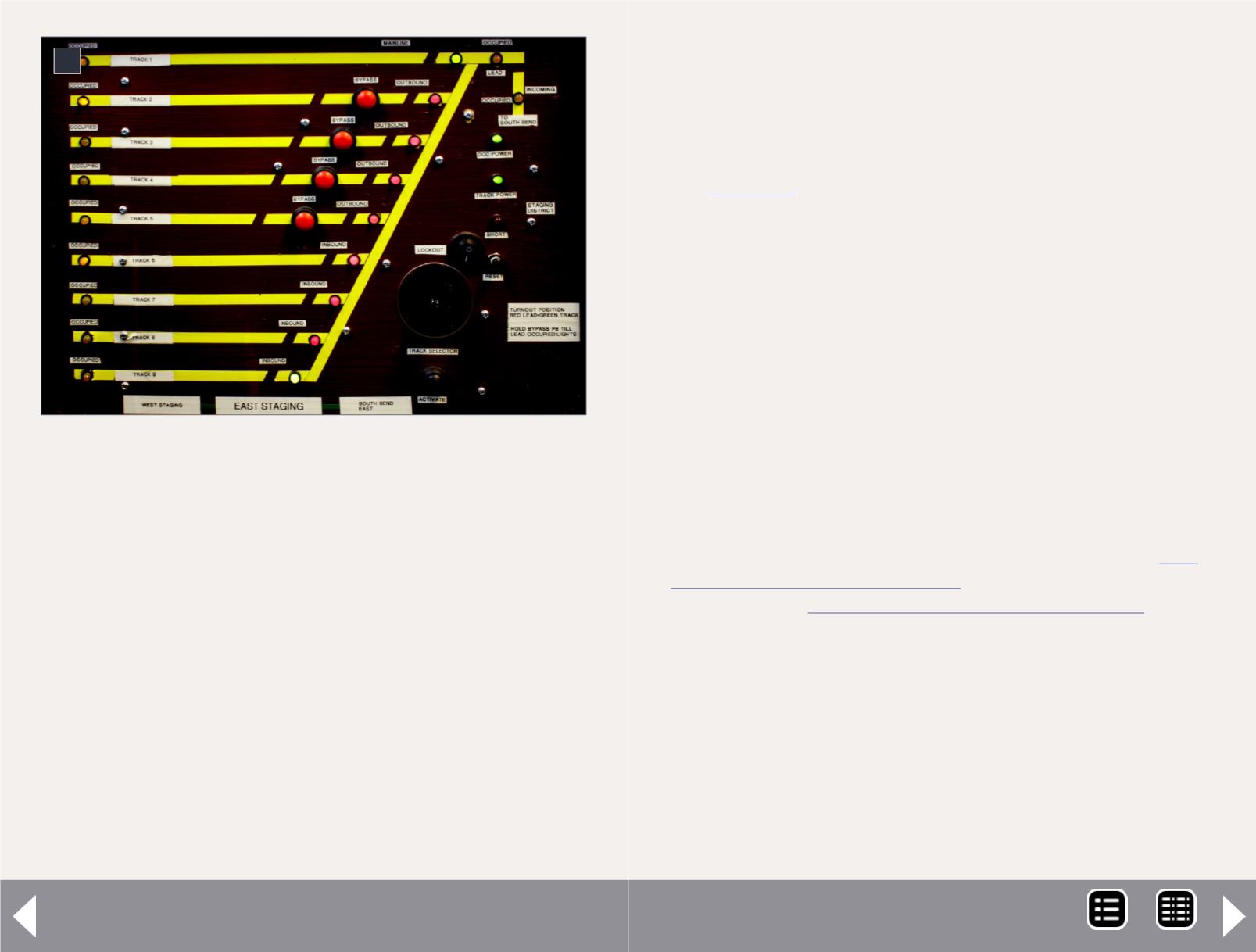
The sensitivity of the NCE BD-20 is adjustable, based on how
many times you loop the wire through the toroid.
As shown in the BD-20 manual, a 10-amp set can only have two
wraps, resulting in the need for less than 5 kohms to achieve
the minimum 4 mA detection current. So, I suggest using 5
kohm resistor wheel sets and doubling the number of cars with
resistors on them.
However, a 5-amp booster district can have 4 wraps, so 5
kohms would work out fine!
If you really want to be covered, put a 40 kohm resistor wheel
set on every car and accept the ¼ amp current drain.
8
8: PCMRC control panel – block detection tells the oper-
ator where to look for his train. See two yellow LEDs illu-
minated on the left side of the panel – track 2 and track 6.
Photo by the author.
Okay, now what?
You have the district detected, now what?
You can use the output to light LEDs and display on a panel
that the track is occupied. This is what we have done with
the hidden staging at the PebbleCreek club layout
, as shown in figure 8.
You can connect through an interface module designed
specifically for your DCC system (DS-64 for Digitrax or AIU
for NCE) and report back through the command station to a
computer for control or panel indications.
You can build a signaling system, as we will touch upon in a
later column.
Which train is where?
Okay, we now know that there is a train in a specific detec-
tion district. But what train is it? The answer is important for
computer control (where the computer runs the trains). This
requires what is known as bi-directional communication.
The first folks to market bi-directional communication were
Digitrax with their system, which they call Transponding
. Lenz has their system,
called RailCom
), which
was embraced by other manufacturers and became the basis
of the NMRA standard for bi-directional communication. Lenz
has donated their patents to the NMRA to allow multiple ven-
dors to participate without royalty payments.
Both systems allow the decoder in the locomotive to respond
back with the decoder address, allowing the computer or
whatever is connected to know which train is where.
There are lots of other aspects of these two systems, in terms
of capabilities, implementation, etc. An in-depth discussion of
DCC Impulses - 7
MRH-Aug 2013


